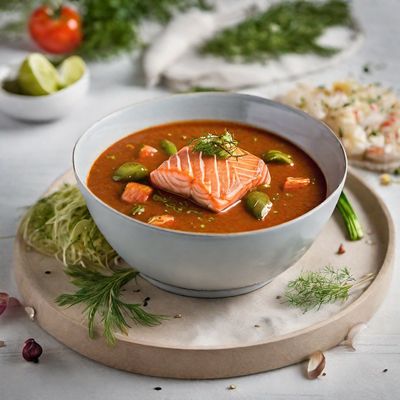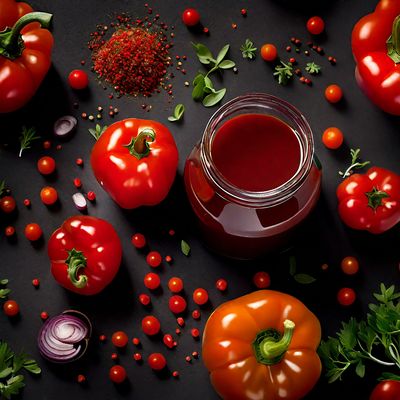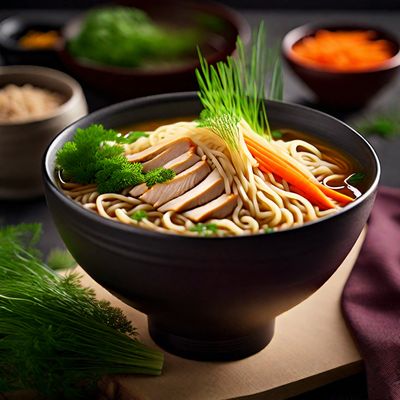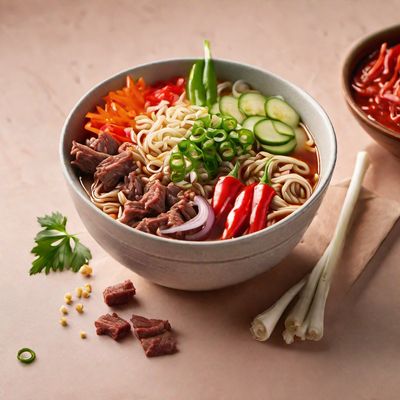
Ingredient
Caraway fruit
The Flavorful Seed of the Caraway Plant
Caraway fruit is small, elongated, and brown in color, with a unique aroma that is reminiscent of anise and fennel. It has a slightly bitter and earthy taste, with a hint of sweetness. The texture of caraway fruit is crunchy and firm, similar to a seed. When used in cooking, it releases its flavors and adds depth to dishes.
Origins and history
Caraway fruit has a rich history that dates back to ancient times. It is believed to have originated in Western Asia or Europe and has been used in culinary and medicinal applications for centuries. It was highly valued in ancient Egypt and Rome, and it has been a staple in European cuisines since the Middle Ages.
Nutritional information
Caraway fruit is a good source of dietary fiber, vitamins A and C, and minerals such as iron and calcium. It is also low in calories, making it a healthy addition to meals.
Allergens
Caraway fruit is not known to be a common allergen, but individuals with allergies to other seeds or spices should exercise caution.
How to select
When selecting caraway fruit, look for seeds that are plump, firm, and free from moisture or mold. The aroma should be strong and fragrant. It is best to purchase whole caraway fruit rather than pre-ground seeds to ensure freshness and flavor.
Storage recommendations
To maintain the freshness of caraway fruit, store it in an airtight container in a cool, dark place, away from moisture and sunlight. Properly stored caraway fruit can retain its flavor for up to a year.
How to produce
Caraway plants can be grown from seeds in well-drained soil and full sun. They require regular watering and can be harvested when the fruits turn brown and dry on the plant.
Preparation tips
Caraway fruit can be used whole or ground in various dishes. It is commonly used in bread, sauerkraut, stews, and pickles. To enhance the flavor, lightly toast the seeds before using them in recipes. Additionally, caraway fruit pairs well with ingredients like cabbage, potatoes, and pork.
Substitutions
Anise seeds or fennel seeds can be used as substitutes for caraway fruit, although they have slightly different flavor profiles.
Culinary uses
Caraway fruit is commonly used in European cuisines, particularly in dishes like rye bread, sauerkraut, and goulash. It adds a distinct flavor to pickles, cheeses, and even liqueurs like aquavit. It can also be used as a seasoning for roasted vegetables or added to spice blends.
Availability
Caraway fruit is commonly available in Europe, particularly in countries like Germany, Austria, and Hungary. It is also cultivated in parts of Asia and North America.
More ingredients from this category
Recipes using Caraway fruit » Browse all

Hessian-style Steamed Dumplings
Hearty Hessian Dumplings: A Taste of Tradition

Hungarian-style Beef Rendang
Magyar Magic: Hungarian-inspired Beef Rendang

Carne Asada Tacos
Latvian-inspired Carne Asada Tacos: A Fusion of Mexican and Latvian Flavors

New Nordic Gumbo
Nordic Seafood Stew with a Southern Twist

Hungarian Chicken Soup
Magyar Magic: Hearty Hungarian Chicken Soup

Molecular Gulyás
Gulyás Reimagined: A Molecular Gastronomy Twist

Latvian-style Ramen
Baltic Bliss Ramen: A Fusion of Japanese and Latvian Flavors

Bavarian Hot Pot
Bavarian Delight: Hearty Hot Pot with a German Twist

Janjetina ispod peke (Hungarian Style)
Hungarian-Inspired Roasted Lamb

Hungarian Ramen
Goulash Noodle Soup

Kung Pao Chicken Latvian Style
Spicy Chicken Stir-Fry with a Latvian Twist

Fettuccine burro e Parmigiano
Parmesan Butter Fettuccine